Westinghouse WCM2100WC Handleiding
Westinghouse
Vriezer
WCM2100WC
Bekijk gratis de handleiding van Westinghouse WCM2100WC (7 pagina’s), behorend tot de categorie Vriezer. Deze gids werd als nuttig beoordeeld door 46 mensen en kreeg gemiddeld 4.4 sterren uit 23.5 reviews. Heb je een vraag over Westinghouse WCM2100WC of wil je andere gebruikers van dit product iets vragen? Stel een vraag
Pagina 1/7

This appliance is not intended for use by persons (including
children) with reduced physical, sensory or mental capabilities, or
lack of experience and knowledge, unless they have been given
supervision or instruction concerning use of the appliance by a
person responsible for their safety.
Children should be supervised to ensure that they do not play with
the appliance.
BEFORE STARTING YOUR FREEZER
It is important that your freezer stands solidly positioned on the
oor. To compensate for any unevenness in the oor, adjustable
feet are provided on chest freezer models size 320 litres and above.
They are located at the right hand end of the freezer. Adjust the
feet when the appliance is installed (or when yo move it to another
location). When correctly adjusted the appliance will be rmly po-
sitioned on the oor.
If the power cord is damaged, have it replaced by a qualied service
technician. Plug this appliance directly into a GPO
Do not use a double adaptor, power board or extension cord.
WARNING: This appliance must be earthed!
For EU countries, the appliance must be positioned so that the
plug is accessible
CLEARANCES
For the most ecient operation of your freezer allow minimum
clearances of 5cm each side and the rear for air circulation.
OPERATING INSTRUCTIONS
Plug into a properly earthed outlet and switch on.
Close the lid and wait for 3 to 4 hours.
Load food into the cabinet.
Adjusting Temperature
Leave the control knob at the original factory setting. This is correct
for most freezing and storing needs. However, the control setting
can be adjusted if required, by inserting a coin into the slot in the
control knob and turning. (Turn clockwise for colder temperatures).
You should only make small adjustments and wait 24 hours to see
whether you need to make further changes.
General Information
• During vacation leave your freezer operating in the normal manner.
However, if you decide to switch the freezer o for an extended
period, remove all food, clean and dry out the cabinet. Leave the lid
open making sure that accidental closure does not occur otherwise
odours will develop inside the freezer.
• The front or outside surface of your cabinet will be warm to touch.
This is normal.
• Due to the eective sealing of the lid gasket, you may nd that re-
opening the lid immediately after closing is more dicult than
usual. This is normal and should it occur wait a while
for air pressure to stabilise within the cabinet.
• Periodically a running water sound may be heard. This is the
compressor lubrication system operating and is normal.
FREEZING FOOD
Although food can be frozen anywhere in the freezer, it is advisable
when freezing fresh food to place the items to be frozen against
the sides of the chest freezer where they will freeze in the shortest
possible time.
Please Note.
If the operation of the freezer is interrupted, most foods will remain
frozen up to 24 hours if the lid is kept closed. If the interruption is
expected to be for a longer period, place dry ice around the food
and keep the lid closed until normal operation is resumed. Dry ice
is usually available from emergency services in capital cities and
most large country towns.
DEFROSTING AND CLEANING
Since the main purpose of your freezer is to preserve food, it
should be kept spotlessly clean at all times. Your freezer should be
defrosted when ice is approximately 6 mm thick; otherwise it will
interfere with ecient operation and reduce storage capacity. To
ensure hygiene and eciency, complete defrosting is recommended
AT LEAST twice each year,preferably when food supply is low.
To Defrost
• Switch o power to freezer at power outlet and remove cord.
• Remove frozen food, wrap in newspaper and place in a cardboard
box very small items and ice cream should be placed in another
freezer if possible.
• Lift out the internal drain plug from the drain
hole inside the freezer. The internal drain plug has a spout which
forms a T’, (see diagram). If dicult to remove, use “T” piece to
twist and pull.
• Remove the external drain plug from the front of the freezer and
push either end of the spout on the internal drain plug, into the
drain hole on the front of the freezer (see diagram).
• If required t one end of a drain hose (not provided), onto the
protruding end of the spout on the internal drain plug and locate
the other end of the hose into the household drainage, eg laundry
oortrap. NOTE You may choose to run this short hose into a
suitable tray or container, or you can connect your garden hose
onto the protruding drain spout and run the water outside into your
garden etc. If you use a tray or container ensure that it is large
enough to accept any water which may ow out.
- Pour approximately 1 litre of warm water down the drain, inside
the chest freezer, to clear it of possible ice residue.
- Leave the lid open and wait for the frost to soften; pans of hot
water may be placed inside the freezer to speed up defrosting.
- Scrape the softened frost o the walls, using a plastic scraper
DO NOT USE A KNIFE, METAL SCRAPER OR SHARP
POINTED TOOL TO REMOVE ICE AS THEY CAUSE DAMAGE
TO THE LINER SURFACE. Do not use mechanical devices or
other means to accelerate the defrosting process other than
those recommended by the manufacturer.
- After defrosting is complete and all of the water has drained,
wipe the freezer out with a damp cloth and dry, ensuring the
freezer inner surfaces are dry before reloading frozen food. Water
in the freezer can cause food to stick to liner when frozen.
- Remove spout from front face of freezer.
- Remove hose from spout.
- Replace the internal drain plug back into the drain hole inside
the freezer. Make sure it is seated properly and is tight.
- Replace the external drain plug.
- Reconnect power cord to power outlet and switch on.
- Reload the food to be frozen.
OPERATING INSTRUCTIONS FOR YOUR CHEST FREEZER
To get the most out of every feature of your Chest Freezer read these instructions carefully.
warning

CLEANING
Interior - The interior should be cleaned when defrosting. Any
spilled food should be should be wiped up thoroughly and
promptly.
Exterior - It is a good idea to polish about once a year with a
high- grade wax like the one you use with your car, after that, an
occasional wipe over with a clean, damp cloth will help remove
ngermarks. Note: Do not wax plastic parts or decorative trim.
Wash these in warm (not hot) water and use an unscented
detergent. Avoid getting water on controls.
Avoid scouring pads, abrasive powders, metal polishes, aerosol
cleaners, methylated spirits and other solvents as they could
damage the easy to clean glossy surfaces.
Some pressurised aerosol containers use ammable propellants.
These containers can usually be identied by the word ammable
and/or a small red ame symbol. These products must not be
stored inside any freezer as an explosion may result.
SERVICE
WHAT TO DO BEFORE YOU CALL FOR SERVICE
Here are some easy checks you can make yourself before you
call for service. You may easily locate the problem and save
yourself the inconvenience, time, and money of a service call.
IF FREEZER IS NOT OPERATING
- Check that the cord is plugged into the outlet properly and that
the outlet is switched “on”.
- Check with another appliance or lamp to see if the outlet has
electrical supply.
- Try adjusting the temperature control to a slightly ‘colder’
position. (See “Adjusting temperature”).
IF THERE ARE INDICATIONS OF ODOUR
- Does interior need cleaning
- Some foods produce odours and should be covered.
- Check that containers and wrapping papers are not the cause.
- Did odour start about the same time you started storing
something dierent?
IF THE LID WILL NOT CLOSE
- Check the storage level of frozen food.
DISPOSAL
When you dispose of your old freezer, remove the lid. Children
can suocate if they get locked inside.
This freezer contains insulation formed with ammable blowing
gases. Avoid safety hazards by carefully disposing of this
appliance.
R600a REFRIGERANT
This appliance contains a small quantity of environmentally
friendly, but ammable, non-synthetic R600a refrigerant.
It does not damage the ozone layer:
• Ensure that the tubing of the refrigerant circuit is not damaged
during transportation and installation.
• Leaking refrigerant may cause eye injuries or ignite.
• The room for installing appliance must be at least 1m3 per 8g of
refrigerant. The amount of refrigerant in the appliance can be
found on the rating plate inside the appliance.
• In Queensland the authorised service person MUST hold a gas
work authorisation for hydrocarbon refrigerants to carry out
servicing or repairs which involve the removal of covers.
If you are unsure of the refrigerant type check the rating plate
on the back of the unit.
warning
warning

© Copyright 2011 Electrolux Home Products Pty Ltd
ABN 51 004 762 341
web: www.electrolux.com.au
P/No. 1458785 Issue: August 2011
Model Number......................................................... Serial Number...................................................
Purchased from..................................................................................................................................
Address...............................................................................................................................................
Date of purchase................................................. Receipt Number....................................................
PLEASE COMPLETE THE ABOVE FOR FUTURE REFERENCE AND
RETAIN FOR YOUR OWN RECORDS. PLEASE DO NOT MAIL
Product specificaties
| Merk: | Westinghouse |
| Categorie: | Vriezer |
| Model: | WCM2100WC |
Heb je hulp nodig?
Als je hulp nodig hebt met Westinghouse WCM2100WC stel dan hieronder een vraag en andere gebruikers zullen je antwoorden
Handleiding Vriezer Westinghouse

21 Mei 2023

18 Mei 2023

7 Mei 2023

13 April 2023

10 April 2023

6 April 2023

4 April 2023

27 Maart 2023

15 Maart 2023

12 Maart 2023
Handleiding Vriezer
- Electra
- Gaggenau
- Kuppersbusch
- SIBIR
- Hotpoint
- Freggia
- LERAN
- Frigor
- Kenmore
- Elco
- Liebherr
- Cylinda
- True
- Profilo
- Viking
Nieuwste handleidingen voor Vriezer

31 Juli 2025
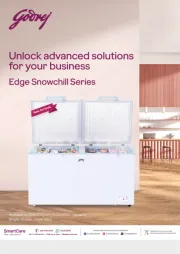
29 Juli 2025
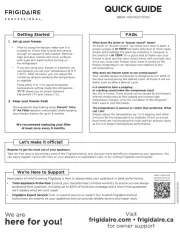
29 Juli 2025
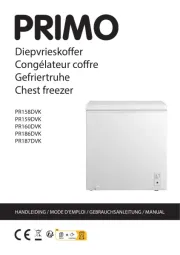
29 Juli 2025
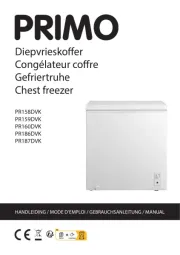
29 Juli 2025
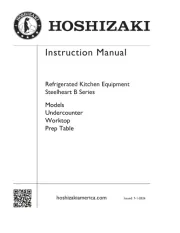
29 Juli 2025
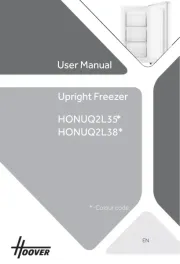
29 Juli 2025
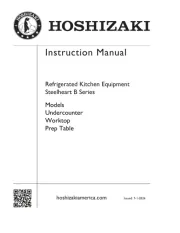
29 Juli 2025

28 Juli 2025
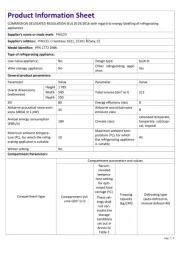
28 Juli 2025